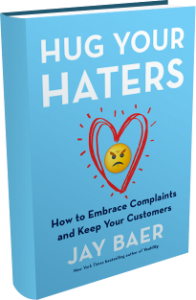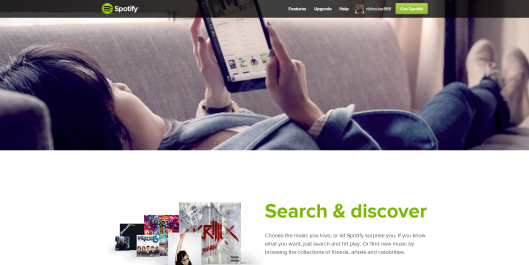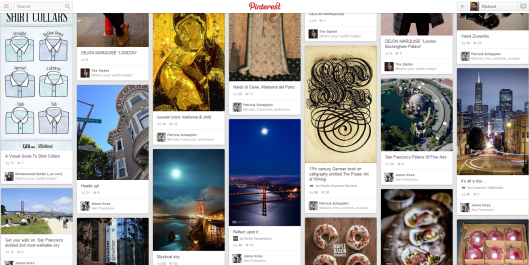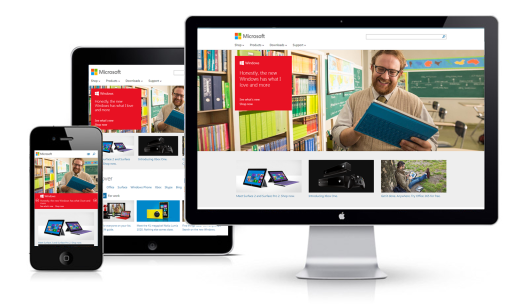 This month (March 2014) my interview with photographer Mark Maryanovich is the cover story for the US publication “Regional Musician.” Below is the interview with Mark. To read the rest of the magazine, see the photos and check out other editions you can go here: www.regionalmusician.com
This month (March 2014) my interview with photographer Mark Maryanovich is the cover story for the US publication “Regional Musician.” Below is the interview with Mark. To read the rest of the magazine, see the photos and check out other editions you can go here: www.regionalmusician.com
Mark Maryanovich is a Canadian photographer based in Santa Monica, CA, born in Windsor, Ontario and raised on Canada’s rainy west coast. He has won a number of awards for photography and is a referenced source of inspiration by many in the industry. His clients have included Chris Cornel, Randy Bachman, Gibson Guitars, Bob Rock, Chad Kroeger and Henry Rollins to name a few. His work has appeared on the cover of books, in Rolling Stone, Billboard, and Canadian Musician and that’s just skimming the surface.
After working with every major artist, label and management company in Canada, Mark’s logical next move was to expand his career south of the border. His personal preference being to shoot outdoors made California the ideal place to relocate. Working in cities like Vancouver often required numerous days to be set aside in order to ensure one day of good weather!
While shooting in LA has the advantage of the weather it has the disadvantage of being home to many, many photographers. So how do you stand out from the crowd and what can artists learn from Mark’s success and experiences?
The reality is that there is little difference between achieving success in music, photography, art, acting or any line of work for that matter. It takes undeniable talent and expertise along with commitment, dedication, passion, work ethic, persistence, self worth, belief, among other things and all of which are traits that Mark has learned from his mentor Raphael Mazzucco.
I have known Mark for a number of years. I was already a fan of his work before we met and didn’t even know it. I had albums with his work on the cover, not to mention some of the most recognizable photos of bands I dig have been taken by him. It was a pleasure to get the chance to ask Mark some questions about his career, what artists can do to have a more successful photo shoot and from his perspective what stands out about successful musicians. Here is the Q&A:
Aaron Bethune: When did you first have an interest in photography?
Mark Maryanovich: My interest in photography started late, I wasn’t introduced to it as a career until I was 25, when I met artist and fashion photographer Raphael Mazzucco while I was living in Montreal.
AB: What inspired it to become a career?
MM: The first portrait I ever shot was printed in Ocean Drive magazine. It was of musician David Usher, and seeing it in print was incredibly inspiring.
AB: Why music and how did you get into photographing musicians?
MM: Raphael taught me that you should photograph what you’re passionate about, and I was always passionate about music. To me it combined art and style, and capturing that made for good pictures.
AB: What was your first big break?
MM: My first big break was photographing The Tea Party at Le Studio Morin Heights for Canadian Musician Magazine.
AB: Where did that lead?
MM: I moved to Vancouver shortly after that and started my career on the west coast. I began by assisting fellow friends and photographers Johnathon Vaughn Strebly and Gregory Crow. I also learned about the importance of personal style from Tracey Pincott, a brilliant stylist. In the early days, we were still using film, so testing and learning how to shoot was much different from today. Expensive for one thing, as we had to pay for film for each shot we took. Photographers these days are extremely lucky to have the freedom of digital both creatively and financially, to test, learn and grow.
AB: Has the work always been word of mouth? Are you a hustler?
MM: Pretty much, the work has been word of mouth. I’ve been really fortunate over my career, in that most of business comes from repeat clients and referrals. I guess the hustling part would come in with the fact that on every shoot I hustle to make sure the client’s expectations are exceeded.
AB: What are your keys to networking? How do you build relationships?
MM: One thing about choosing to be a music photographer, is that my clients are incredibly cool people. I always enjoyed going to shows, meeting and hanging out with musicians. I’m interested in music and getting to know them so a lot of my relationships build organically, but they’re always about the work, which is what I most enjoy.
AB: What do you feel beyond talent makes people want to work with you?
MM: I usually try to make each shoot different, and usually it’s on location and somewhere interesting and new to the artist that makes it compelling for both of us. Also, I shoot very differently from other photographers, I think. I prefer to work one on one with the artist, and a lot of artists have said that they appreciate that, and find that it makes the shooting process a lot easier and more enjoyable for them.
AB: What does a typical shoot consist of?
MM: A typical shoot consists of collaborating with the artist beforehand in terms of locations and style, researching the client and their music to fully understand the direction they’re looking to go, scouting locations, planning set ups, then executing the shoot. Beyond that, every shoot is different, which is another aspect I really enjoy about my job.
AB: What makes an enjoyable experience working with an artist?
MM: Good energy and an open mind, a willingness to try something different, even if it’s not been planned beforehand make for an enjoyable experience, because you never know what might work on the day.
AB: From your perspective as a photographer, what stands out about artists that have achieved a high level of success? Is there a certain feeling you get from them, a particular personality, recognizable traits?
MM: Artists that have achieved the highest level of success are usually the most professional, and are focused on getting the job done in the time allotted. Also, good business skills or management with good business skills are really recognizable traits.
AB: What are the key elements to a successful shoot? What can artists do to ensure the best experience and result?
MM: Being on time is a key element for a successful shoot. Waiting for one band member to show while the light is perfect and you have 10 set ups to achieve is no way to start the day. Bringing lots of options in terms of clothing is a great idea. Getting a haircut or doing anything that radically changes your appearance right before a shoot is probably not a great idea, in case you’re not happy with it. Hitting the gym doesn’t hurt either! And as mentioned earlier, good energy, an open mind and a willingness to try something different that may involve working a bit for, are also key elements.
AB: Where do you get your inspiration?
MM: Most of my inspiration comes from listening to the artist’s music, and discussing the themes and things that went into writing and making the songs.
AB: What is your favourite medium to work with? Posters, album covers and portraits/band shots seem quite different in terms of space and dimension.
MM: I like working with bands because it’s challenging to come up with something different, and to have two, three, five or sometimes more people all looking great and interesting at the same time. I love the format of 12 inch vinyl, there’s nothing like seeing big artwork. Bands that are putting out vinyl in this day and age, to me, it adds a touch of class and nostalgia that I love.
AB: Have there been any disaster shoots or exceptionally good ones of note?
MM: Chris Cornell for Gibson Guitars was a definite highlight. I’ve been really lucky, there haven’t been any disaster shoots I can think of.
AB: What kind of music are you listening to?
MM: I usually listen to every kind of music, as I work with artists from a lot of different genres, from rock to country or hip hop and dance. Right now, I’ve been listening to a lot of Terraplane Sun.
AB: Are you a fan of anything?
MM: I’m a fan of old cars, music, art, photography and film.
AB: Who hires you?
MM: I usually get hired by bands and artists themselves, management companies, record labels, magazines, or marketing departments at product companies.
AB: You have received a Canadian Country Music Award not once but twice, had your work featured in major magazines including Billboard, Rolling Stone, ION, Canadian Musician, Modern Drummer, Guitar World, and Regional Musician to name a few, Randy Bachman’s autobiography has your photo of him as the cover… what’s next? Where are your sites set?
MM: My sites are set on developing artMARKet and clothingMARKet. I’m branching out into art photography, and down the road into some select clothing items. It’s new for me, the art part, because I’ve never really considered my work to fall into that category. I’ve been really fortunate though, to have been recognized by the California art community recently, with placements in two juried art photography shows, and a few of my clients have commissioned some personal work of mine, so I thought that maybe this would be a good idea.
AB: How has the internet affected photography?
MM: When I began in photography, the iconic album cover and one or two promo photos/ tour posters were what people identified with the music for one to two or even three years. Now the constant demand for new visuals is phenomenal. As a photographer, I love it, as I love shooting a lot of photos and getting a lot of different pictures from one shoot, and I love it when artists update constantly, it’s a treat for their fans.
AB: Who do you respect in your industry?
MM: Raphael Mazzucco, Anton Corbijn, and Annie Leibovitz I completely respect in the industry, and I’m a huge fan of their work.
AB: Who have been some of the people that you have most enjoyed working with?
MM: I’ve been really fortunate to have worked with amazing clients across the board. I always learn something from each of the artists I work with. One of my favourite experiences was working with Randy Bachman( Guess Who, BTO) at his home in Salt Spring Island. The place was amazing, I remember I was moving some things around his studio to set up a shot & I uncovered a set of bongo drums that were signed “To Randy, Wow, Ringo Starr”… that was pretty cool. Shooting Chad Kroeger(Nickleback) for his custom Gibson guitar at his house in BC was a great experience. He’s a true class act, incredibly intelligent, generous and fun to be around. One of my favourite shoots with 54*40 was our first one together, when we shot 8×10 polaroid. Pulling apart that big sheet of film on the day after running it through a processor hooked up to my car battery with Neil & the guys was a once in a lifetime experience. Having producer Bob Rock in my studio with his son was overwhelming & the interest he took in my work was incredibly inspiring. One of my first ever shoots I’ll always remember was with Henry Rollins. Super intense.
AB: What drives you? What gets you excited?
MM: The picture I’m going to shoot next.
AB: How do you approach photography of people vs. of product/instruments?
MM: My experience with shooting product has been that usually the musician is included with the instrument. Then it becomes more about the person, more of a portrait. Photographing people is about building confidence with them, whereas in shooting products and instruments I’m always looking for how to be creative with it.
AB: Where have you had to travel to for photo shoots?
MM: All across Canada, from Salt Spring Island to PEI, New York, Texas, Nevada, Nashville, and all over California.
AB: What are some of the most unusual places/sets you have shot?
MM: Monahans Sandhills in Texas, Valley of Fire Nevada, Death Valley in August, Brooklyn Bridge at 5am, rooftops in LA.
AB: Who would you like to photograph?
MM: David Bowie.
To see Mark’s work visit: www.markmaryanovich.com
Interview by Aaron Bethune
Aaron is an author, music consultant, creative collaborator and musicpreneur.
Author: www.musicpreneur.ca
Podcast: www.abovethenoise.ca







 This month (March 2014) my interview with photographer Mark Maryanovich is the cover story for the US publication “Regional Musician.” Below is the interview with Mark. To read the rest of the magazine, see the photos and check out other editions you can go here: www.regionalmusician.com
This month (March 2014) my interview with photographer Mark Maryanovich is the cover story for the US publication “Regional Musician.” Below is the interview with Mark. To read the rest of the magazine, see the photos and check out other editions you can go here: www.regionalmusician.com














